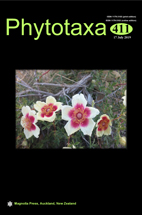Abstract
A new freshwater ascomycetous species, Wicklowia submersa was found on submerged wood in a freshwater stream in Krabi Province in southern Thailand. This is a second species in a monotypic family. Morphological examination and phylogenetic analysis of LSU and SSU sequence data support this new species as belonging to Wicklowia in the family Wicklowiaceae (Pleosporales). Wicklowia submersa possesses ascomata that are immersed, erumpent when mature, raised and visible as dark oval or slit-like structures on host surface. The bitunicate asci have well-developed ocular chambers when immature with a short pedicel. Ascospores are ellipsoidal-oblong, asymmetrical, 1-septate, guttulate when immature, hyaline, with a distinctly mucilaginous sheath. The characteristics of the asci, and ascospores which lack both apical and basal appendages distinguish it from the type species W. aquatic. A description, illustration and comparison of the new species is provided. The risk of introducing monotypic families is discussed.

